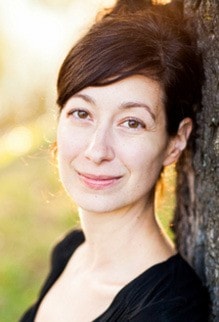Ludwig Van Beethoven’s music presents immense challenges to the performer, but if you persevere you break through into Beethoven’s world, as has done Amy Zanrosso, a renowned and dynamic pianist who is taking the stage with the Symphony of the Kootenays this weekend.
The Symphony is launching its 2016/17 season with a brace of concerts in Trail (Saturday, Oct. 15) and the Key City Theatre in Cranbrook (Sunday, Oct. 16). Zanrosso — originally from Castlegar, currently from San Francisco — is featured soloist, presenting Beethoven’s Piano Concerto. No. 4. Written in 1805 -1806, the work revolutionized the concerto as a form, and is now considered one of the central pieces — a heavyweight — in piano music.
“This has been one of the most challenging projects I’ve done to date,” Zanrosso told the Townsman. “As a concerto it’s big, it’s technically challenging, it’s musically challenging. I play a lot of hard music, and this through me for a loop a number of times.
“I was two months in a one point and was thinking ‘this is so monumental. The first movement itself is so long a it’s got a huge cadenza on top of it all. And I kept telling myself telling myself I could do it — keep working, keep working — and now I’m at the point where I am so in love with it. I look forward to sitting down and playing it with an orchestra.”
But that’s Beethoven for you. Arguably more than any other composer, his music captures the essence and emotion of the human experience. But his music challenges every musician with the impossible.
“With any instrument — whether it’s piano, voice, cello — he’s always crossing lines where his musicians would say ‘this is impossible!’” Zanrosso said. “He’d say ‘find a way to do it.’
“Beethoven’s Ninth Symphony is a perfect example. With the soloists’ parts at the end, they were singing in registers they’d never sung in before. He basically forced their hand — saying ‘this is the future.’”
The Piano Concerto No.4, in G Major, has become one of the pieces pianists have to know.
“No concerto had ever started with the soloist before the Beethoven’s Fourth Piano Concerto,” Zanrosso said. “Before then, concertos always started with orchestras. They go into the main theme, maybe go into the development theme or secondary theme — there would be however many minutes of introduction of what the first movement was going to be about. And Beethoven turned that all on its head.
“So in this concerto the piano begins, and states the theme of the first movement that we hear throughout. It’s really intimate, and sets up the whole concerto in a way that had never been done before. It opened new paths.”
Beethoven was renowned as a piano performer before he became immortalized as a composer. Zanrosso has always felt a connection to his piano music.
“He was a fantastic player. I picture him as a madman at the piano, writing music for the piano that had never been explored before, especially in his later years when he was losing his hearing. He’s exploring the sounds that the piano can achieve.”
The Symphony of the Kootenays will give her bigger stage and ensemble to help her express what Beethoven achieved. This will be Zanrosso’s first performance with the Symphony of the Kootenays.
“I never thought I would play with a Symphony ever, in my ambitions.,” she said. “I love chamber music, I’ve always been a chamber musician. I like small ensembles, playing with a violinist or cellist, or with a quartet or quintet. And I have played with somewhat larger ensembles”
But she said that when Music and Artistic Director Jeff Faragher invited her to perform with the Symphony she jumped at the chance.
“I hope an audience will come away with the dialogue that goes on between the piano and the orchestra,” Zanrosso said, “because there’s a real dialogue going on, with the main themes being passed back and forth and being developed.
“I also hope they get a sense of the mad emotion that Beethoven puts into every single note of his music. One minute he’ll be tempestuous, the next minute he’ll be lyrical and poetic, and the next he’ll be devastated. If you haven’t heard the piece before you might just get the broad strokes of that. But I really hope that it connects with the audience and we get to hear what Beethoven tries to express with his music. There’s so much to take away with it. “
Also on the bill at this upcoming weekend concerts are Rimsky-Korsakov’s “Scheherazade,” Vivaldi’s “Autumn” from “The Four Seasons,” and Canadian composer Allan Gilliand’s “Always be True.”
The Cranbrook concert, Sunday, Oct. 16, is set for 3 p.m.
Amy Zanrosso was born and raised in Castlegar.
“I’ve been spending a lot of time there lately since I moved to San Francisco,” she said. “I’ve been going back every three months or so, to hang out with my dad, see my old friends. And it’s been such a great reconnection, because before that I was only going back about once a year.”
“I’m so glad to have grown up there — it’s such a different perspective.”
